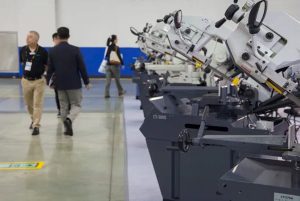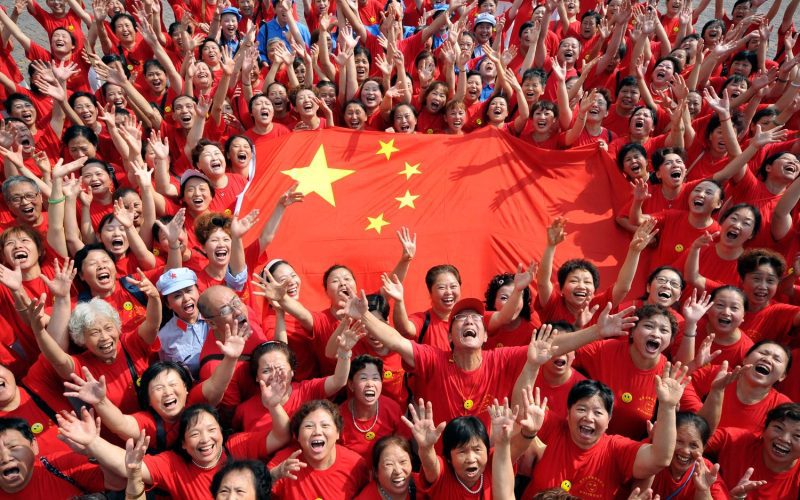In the wake of stringent Western sanctions imposed following its 2022 invasion of Ukraine, Russia has been compelled to explore alternative avenues to sustain its industrial sector. One significant strategy that has emerged is the procurement of second-hand machine tools from China. This move underscores the evolving dynamics of international trade, geopolitics, and the strategic partnership between Moscow and Beijing.
The Impact of Sanctions on Russia’s Industrial Capabilities

Western sanctions targeting Russia’s financial system, key industries, and technology access have severely constrained its ability to acquire new machinery and industrial equipment. These measures, aimed at weakening Russia’s economic and military capabilities, have had far-reaching implications. The Russian industrial sector, particularly its defense, automotive, and manufacturing industries, has faced acute challenges in maintaining production levels and modernizing its infrastructure.
Machine tools, essential for manufacturing precision components, have become particularly scarce. These tools are vital for producing everything from car parts to advanced weaponry. Historically, Russia relied heavily on European and American suppliers for high-quality machine tools. With these sources now largely inaccessible, the need to find alternative suppliers has become urgent.
China as a Strategic Partner
China’s role as a strategic partner for Russia has gained prominence in recent years. Both nations share a mutual interest in counterbalancing Western influence and have developed robust economic ties. China’s vast manufacturing sector and its position as the world’s largest producer of machine tools make it an attractive alternative supplier for Russia.
China’s second-hand machine tool market offers several advantages. Firstly, it provides a cost-effective solution for Russia’s immediate needs. Second-hand tools, while not state-of-the-art, can still fulfill many of the requirements for industrial production. Moreover, the purchase of used equipment bypasses some of the export controls and restrictions that would apply to new machinery.
The Mechanics of Procurement
The process of acquiring second-hand machine tools from China involves several steps. Russian enterprises and intermediaries actively search Chinese markets, both online and offline, to identify suitable equipment. Key regions in China known for their robust machinery sectors, such as Guangdong, Jiangsu, and Zhejiang provinces, have become focal points for these efforts.
Russian buyers often collaborate with Chinese brokers who specialize in the resale of industrial equipment. These brokers facilitate negotiations, handle logistics, and ensure compliance with export regulations. The transactions typically involve extensive due diligence to assess the condition and functionality of the used machinery, ensuring it meets Russian industrial standards.
Challenges and Adaptations
While the procurement of second-hand machine tools from China presents a viable solution, it is not without challenges. One major issue is the compatibility of Chinese machinery with Russian industrial systems. Differences in technical standards, maintenance requirements, and operational protocols necessitate significant adaptation efforts.
Moreover, the quality and reliability of second-hand equipment can be variable. Russian industries must invest in refurbishing and upgrading these machines to ensure they meet production needs. This process can be time-consuming and costly, but it remains more feasible than the alternative of building new machinery domestically or waiting for sanctions to be lifted.
Strategic Implications
The shift towards Chinese second-hand machine tools reflects broader strategic trends in Russia’s economic policy. It highlights a deliberate pivot away from dependency on Western technology and a strengthening of ties with China. This strategy aligns with Russia’s broader objective of reducing vulnerability to Western economic pressures and enhancing self-sufficiency.
Furthermore, this development has implications for the global machine tool market. As Russia increasingly taps into Chinese supplies, it may influence pricing and availability dynamics, potentially creating opportunities and challenges for other nations dependent on Chinese machinery.
The Future of Russia-China Industrial Collaboration
The collaboration between Russia and China in the realm of industrial machinery is likely to deepen. Both nations have a vested interest in fostering a resilient partnership that can withstand external pressures. For China, supplying second-hand machine tools to Russia not only strengthens economic ties but also asserts its role as a key player in the global industrial landscape.
For Russia, the continuous inflow of Chinese machinery is crucial for maintaining its industrial base amid sanctions. This partnership may evolve to include not just second-hand equipment but also joint ventures and technology transfers, further integrating the industrial capacities of the two nations.
Conclusion
Russia’s search for second-hand machine tools in China is a testament to the resilience and adaptability of its industrial sector in the face of Western sanctions. This strategic move underscores the importance of Sino-Russian cooperation and highlights the complexities of navigating global trade under restrictive conditions. As both nations continue to align their economic and strategic interests, the procurement of Chinese machinery will likely remain a cornerstone of Russia’s efforts to sustain and modernize its industrial capabilities.












